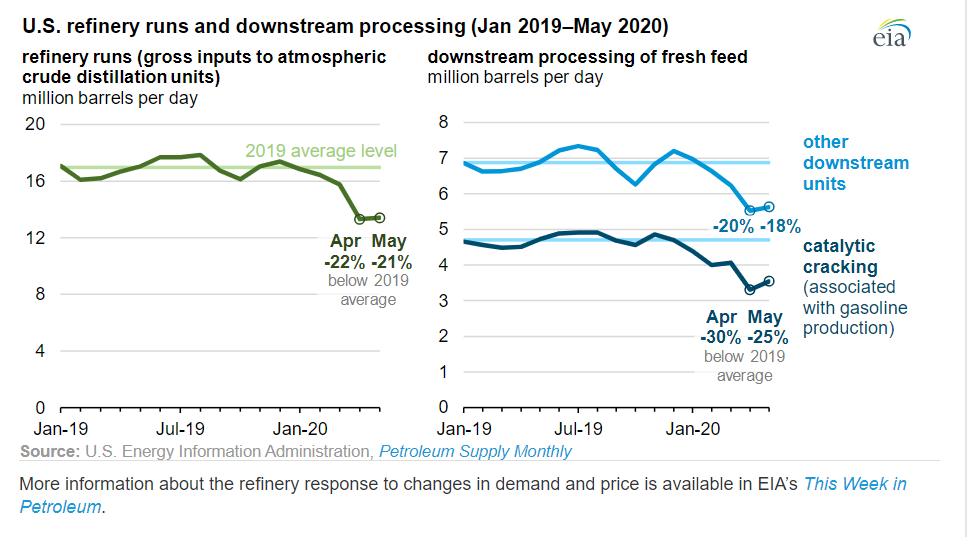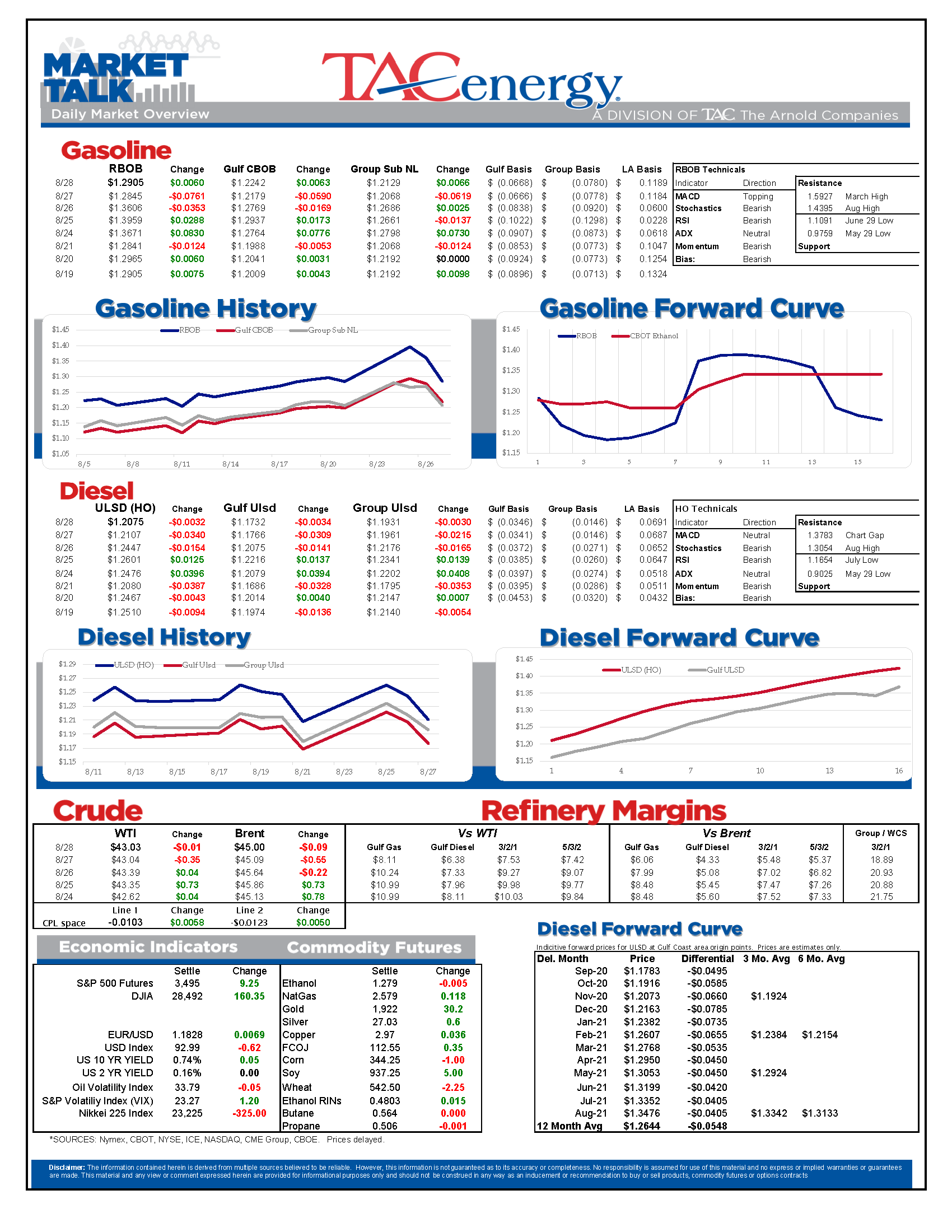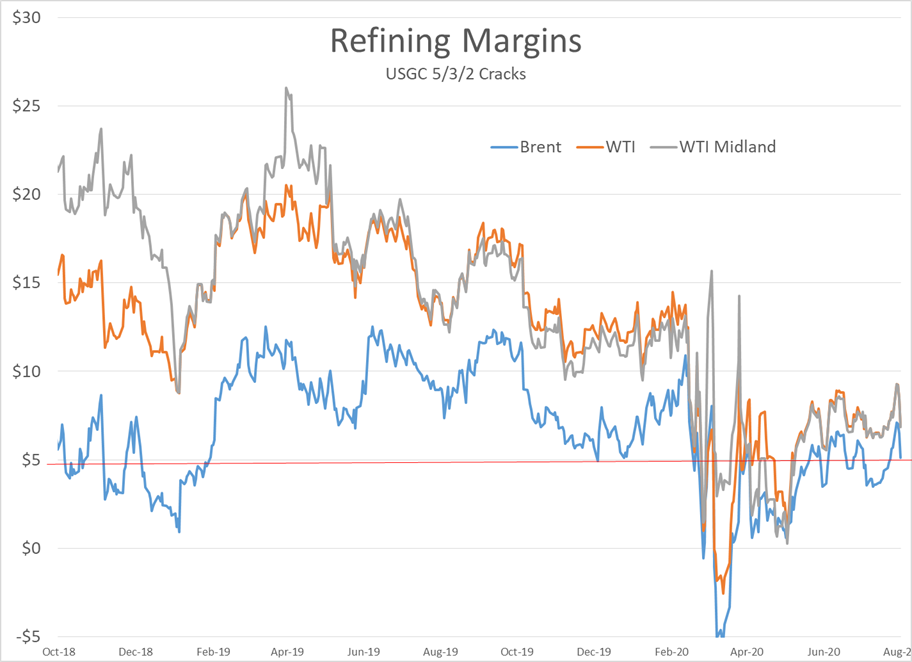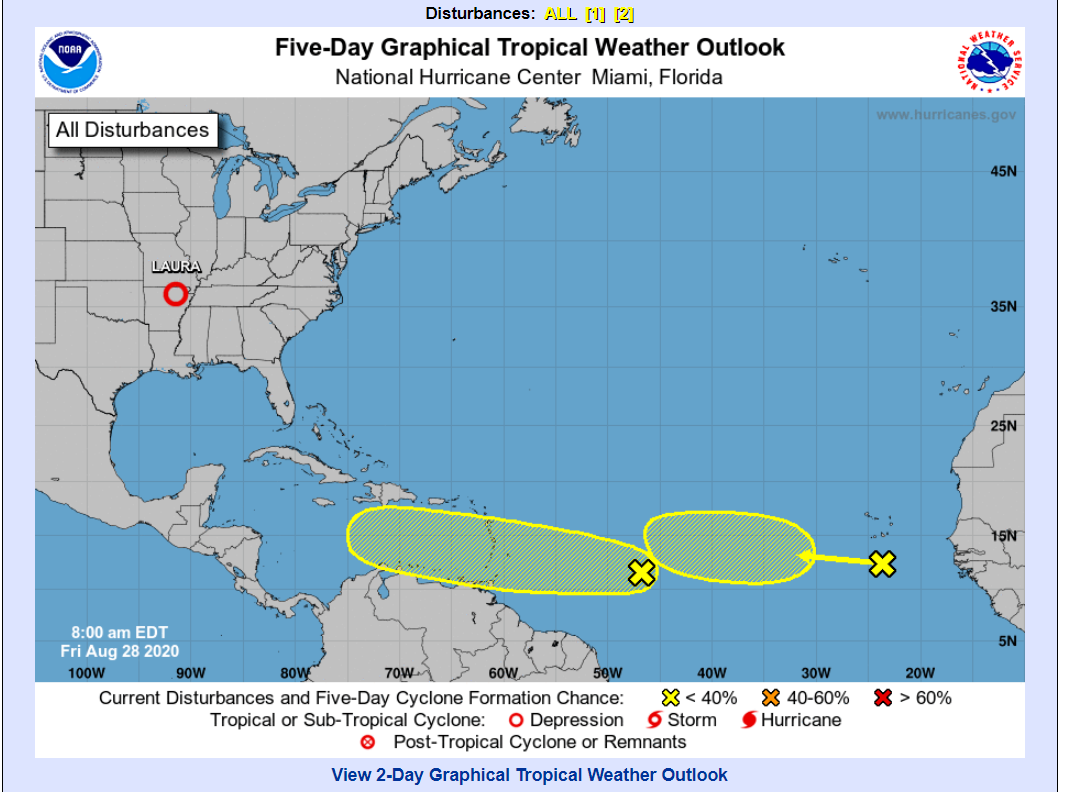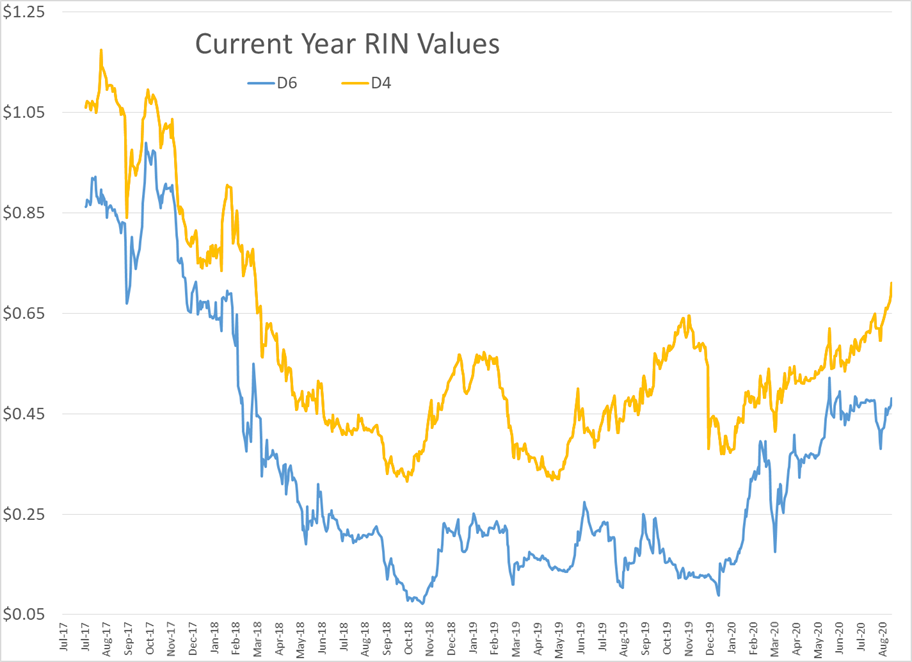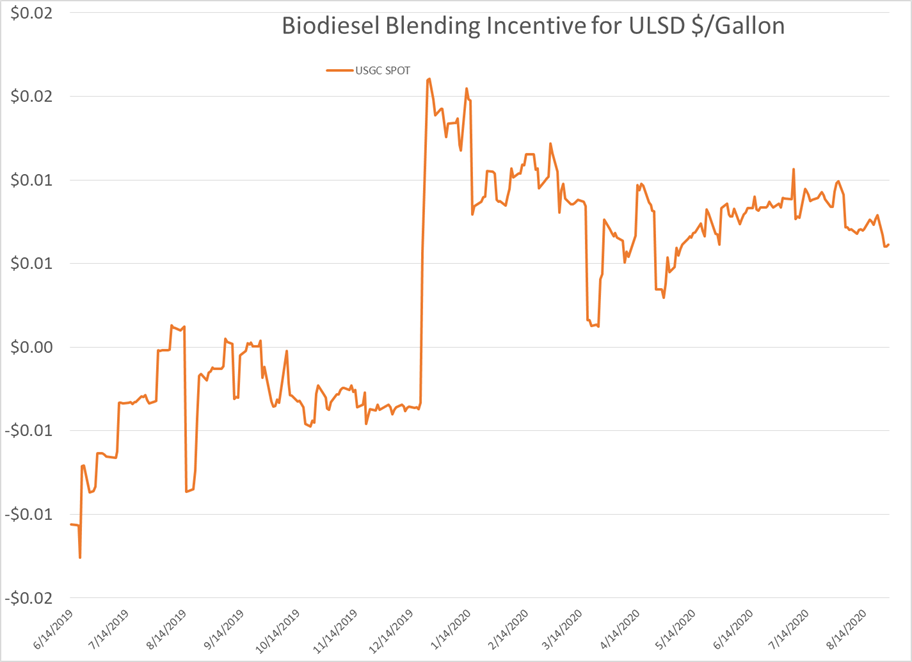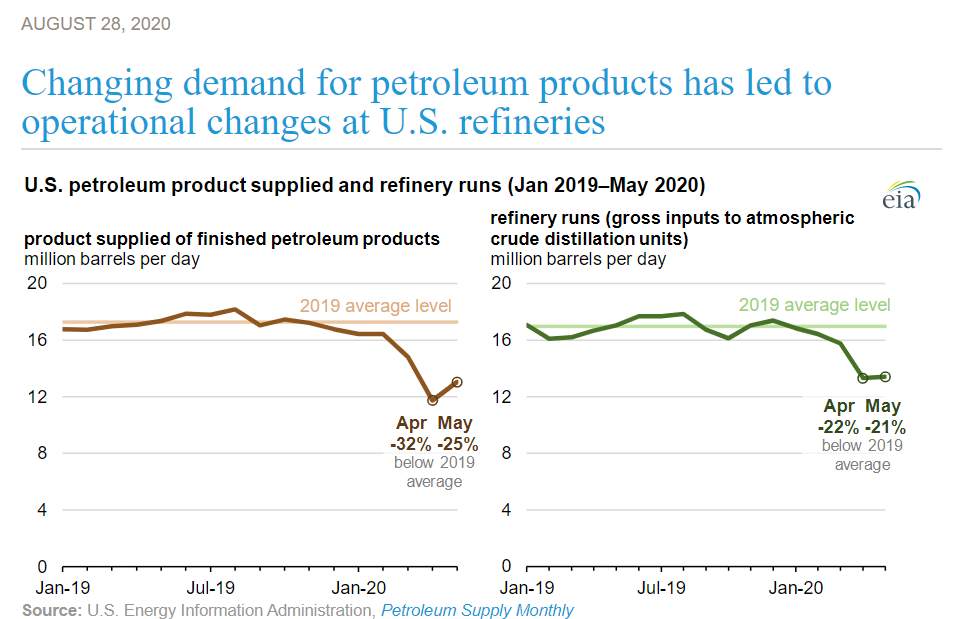Refineries Initiate Restart Efforts

We’ve reached the calm after the storm as the Gulf Coast refining industry is assessing the damage from Hurricane Laura, and most companies seem to be breathing a big sigh of relief. Unfortunately, much of the country is still going to feel an impact from this storm, as flooding potential stretches through the mid-west and east coast through the weekend.
Three of the refineries that had initiated shutdowns ahead of the storm have already filed with the state that they were beginning restart efforts, and more are expected to follow suit today as reports suggest the plants outside of Lake Charles likely avoided major damage thanks to the eastward shift in the storm’s path prior to landfall.
We will probably not know the status of the two refineries that were operating in Lake Charles before the storm until next week, since damage assessment crews were not allowed into the area Thursday. A major fire in a nearby chemical factory, and the closing of the Interstate 10 bridge due to a runaway casino boat are just a couple of examples of issues that may be hampering those efforts.
The one critical unknown in terms of regional supply is whether or not the Colonial station near Lake Charles suffered any damage. The pipeline continues to operate downstream, but if Lake Charles is blocked, the barrels originating in the Houston and Port Arthur hubs won’t be able to move through to the rest of the country. There are no reports that the facilities were damaged, they just don’t know since accessing the location may still take a couple more days. Explorer pipeline reported no damage to its facilities, but will still see slight delays in restart due to uncertainty from the local utilities on power supply.
The bad news for refiners that managed to avoid operational issues during the storm is that the boost in margins was short-lived as both gasoline and diesel prices have crumbled, and are now threatening a technical break to the downside that could drag many plants back to the cusp of break-even levels.
Don’t relax just yet. As is often the case in active hurricane seasons, major hurricanes aren’t isolated events, (i.e. Harvey/Irma/Maria in 2017, Gustav and Ike in 2008, Katrina/Rita/Wilma in 2005). Already this morning, the National Hurricane Center is tracking two new potential systems crossing the Atlantic, both given 30 percent odds of development next week.
D4 (Bio) RINs hit a fresh 2.5 year high Thursday, as surging soybean prices and falling diesel prices gives a poor outlook for incremental bio blending. Exports to China and weather damage from the Derecho earlier in the month are both getting credit for the rally in Soy prices. Corn and ethanol prices have also been rallying, but have not kept pace with bio, partially due to the fact that ethanol blending is less discretionary, which has kept D6 RINs from pushing through recent highs so far.
The EIA this morning took a closer look at how U.S. refineries have been forced to make drastic operational changes this year due to COVID demand impacts. Perhaps the most impressive piece is how the plants have been able to dramatically shift product yields in response to the wild swings in gasoline and jet fuel demand. That unprecedented shift towards diesel production also helps explain why diesel prices barely flinched this week even when it appeared that Laura might shut down 20 percent of the country’s refining capacity.
Click here to download a PDF of today's TACenergy Market Talk.
Latest Posts
Week 16 - US DOE Inventory Recap
Energy Markets Trading Quietly In The Red As Ethanol Prices Rally To Five-Month High
The Struggle For Renewable Producers Continues As A Rapid Influx Of Supply And Crashing Credit Prices Make Biodiesel
After Years Of Backwardation, Diesel Prices Have Slipped Into Contango Over The Past Week
Social Media
News & Views
View All
Week 16 - US DOE Inventory Recap

Energy Markets Trading Quietly In The Red As Ethanol Prices Rally To Five-Month High
Energy markets are trading quietly in the red to start Wednesday’s session after a healthy bounce Tuesday afternoon suggested the Israel-Iran-linked liquidation had finally run its course.
There are reports of more Ukrainian strikes on Russian energy assets overnight, but the sources are sketchy so far, and the market doesn’t seem to be reacting as if this is legitimate news.
Ethanol prices have rallied to a 5-month high this week as corn and other grain prices have rallied after the latest crop progress update highlighted risks to farmers this year, lower grain export expectations from Ukraine, and the approval of E15 blends this summer despite the fact it pollutes more. The rally in grain and renewables prices has also helped RIN values find a bid after it looked like they were about to test their 4-year lows last week.
The API reported small changes in refined product inventories last week, with gasoline stocks down about 600,000, while distillates were up 724,000. Crude oil inventories increased by 3.2 million barrels according to the industry-group estimates. The DOE’s weekly report is due out at its normal time this morning.
Total reported another upset at its Port Arthur refinery that’s been a frequent flier on the TCEQ alerts since the January deep freeze knocked it offline and damaged multiple operating units. This latest upset seems minor as the un-named unit impacted was returned to normal operations in under an hour. Gulf Coast basis markets have shrugged off most reports of refinery upsets this year as the region remains well supplied, and it’s unlikely we’ll see any impact from this news.
California conversely reacted in a big way to reports of an upset at Chevron’s El Segundo refinery outside of LA, with CARBOB basis values jumping by more than a dime. Energy News Today continued to show its value by reporting the upset before the flaring notice was even reported to area regulators, proving once again it’s ahead of the curve on refinery-related events. Another industry news outlet meanwhile struggled just to remember where the country’s largest diesel seller is located.
Click here to download a PDF of today's TACenergy Market Talk

The Struggle For Renewable Producers Continues As A Rapid Influx Of Supply And Crashing Credit Prices Make Biodiesel
The sigh of relief selloff continues in energy markets Tuesday morning, with gasoline prices now down more than 20 cents in 7 sessions, while diesel prices have dropped 26 cents in the past 12. Crude oil prices are within a few pennies of reaching a 1 month low as a lack of headlines from the world’s hot spots allows some reflection into the state of the world’s spare capacity for both oil and refined products.
Gasoline prices are trading near a 6-week low this morning, but still need to fall about another nickel in order to break the weekly trendline that pushed prices steadily higher since December. If that trend breaks, it will be safer to say that we saw the end of the spring gasoline rally on April 12th for the 2nd year in a row. Last year RBOB futures peaked on April 12 at $2.8943 and bottomed out on May 4th at $2.2500. The high (at this point) for this year was set on April 12th at $2.8516, and the low overnight was $2.6454.
It’s not just energy commodities that are seeing an unwind of the “flight to safety” trade: Gold prices had their biggest selloff in 2 years Monday and continue to point lower today. Just how much money poured into commodities in the weeks leading up to the direct confrontation between Israel and Iran is unclear, but we have seen in year’s past that these unwind-events can create a snowball effect as traders can be forced to sell to cover their margin calls.
Supply > Demand: The EIA this morning highlighted the record setting demand for natural gas in the US last year, which was not nearly enough to offset the glut of supply that forced prices to a record low in February. A shortage of natural gas in Europe was a key driver of the chaotic markets that smashed just about every record in 2022, and an excess of natural gas supply in Europe and the US this year is acting as a buffer, particularly on diesel prices.
The struggle for renewable producers continues as a rapid influx of supply and crashing credit prices make Biodiesel, RD and SAF unprofitable for many. In addition to the plant closures announced in the past 6 months, Vertex Energy reported Monday it’s operating its Renewable Diesel facility in Mobile AL at just 50% of capacity in Q1. The truly scary part for many is that the $1/gallon Blender's tax credit ends this year and is being replaced by the “Clean” Fuel production credit that forces producers to prove their emissions reductions in order to qualify for an increased subsidy. It’s impossible to say at this point how much the net reduction will be for domestic producers, but importers will get nothing, and at current CI values, many biodiesel producers may see their “blend credit” cut by more than half.
Click here to download a PDF of today's TACenergy Market Talk.
